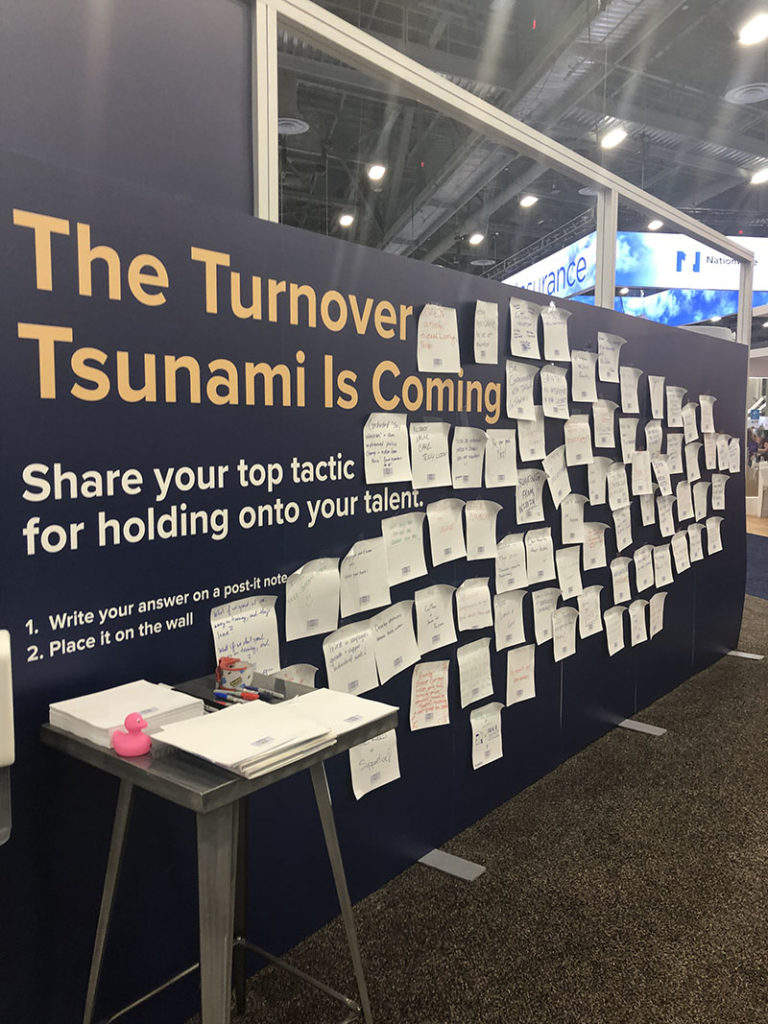AI, deportations, tariffs, and birthrate declines are reshaping America's workforce—blue- and white-collar alike. From baby boomer exits to AI disruptions, breaking down the workforce challenges no leader can afford to ignore.
Seven Proofs Managers Drive Retention, Not HR

At the SHRM21 conference in Las Vegas, I addressed a mega-session crowd on the topic Seven Proofs That Managers Drive Engagement & Retention, Not HR. I thought I’d revisit my notes from that event two years later to see how far retention efforts have come.
The Seven Proofs for Retention Have Not Changed in Two Years
As I’ve shared here over the years, data supports that as important as recruiting is, especially at a time when the number of open positions AND the number of employees quitting across our country continues to be a challenge, helping managers solve turnover to keep the employees you have is also as critical.
In my book HR’s Greatest Challenge, I outline more than 25 distinct studies that all point to one thing: managers as the main reason employees leave and dis-engage. From those 25 studies I selected the top seven that stood out the most:
- Manager opinions impact pay and more.
- Managers drive 70% variance in engagement.
- Holding nurse managers accountable for retention out-performed childcare and scheduling.
- Managers drive 22 of the top 25 stay/leave predictors.
- School managers…principals…drive teacher turnover.
- Poor leadership causes over 60% of all employee turnover.
- Per Gallup’s decades of research on this topic, employees join for things and stay/leave for managers.
As a group we agreed that these seven were real no-brainers, but that the trick is what to do with the information to improve engagement and retention upon returning to work.
It Appears Two Years Later, Retention Efforts Have Not Changed
At SHRM21 in Las Vegas, SHRM placed a “The Turnover Tsunami is Coming” wall on the expo floor at the conference, asking attendees to jot and post their very best ideas for stopping turnover. The responses included recruit better, improve onboarding, and of course do more engagement surveys and exit surveys.

Two years later, SHRM21’s Wall makes it clear there was a total disconnect between what research and science tells us and what we actually have on our daily to-do lists to improve retention. If you accept that the science behind the seven studies as true… then it means you must also accept that any investment of your time in the following activities is less important than helping your managers solve turnover:
- HR onboarding new hires
- Purchasing better benefits
- Conducting engagement surveys
- Conducting exit surveys
- Benchmarking pay and benefits against competitors
Today, helping managers solve turnover is more important than recruiting new hires because of the impact of “workforce shortages” on productivity. Which is why the single most important metric regarding turnover is turnover by manager, and right behind that is turnover by length of service. This data is likely to reveal that your new hires are quitting soon after onboarding and that you’re in danger of the doom loop of recruiting, failing to grow your total headcount because new hires don’t stay, putting even more stress on recruiting as a solution to retention.
How Far Has Your Retention Come in Two Years?
Thinking back to SHRM21, attendees and I discussed precisely how to cut turnover by leveraging the seven proofs and implementing Finnegan’s Arrow which includes (1) determining turnover’s cost so executives establish retention goals, then (2) training managers to conduct Stay Interviews, followed by (3) asking managers to forecast how long each employee will stay.
Then, we discussed the resistance we often find when HR asks managers to do something extra like learn to conduct Stay Interviews including:
“We have too many meetings already, don’t have time”
“Employees leave because of pay”
“We do surveys and that’s enough”
“Employees won’t tell the truth”
“Millennials will leave no matter what”
The great news, though, is that if your executives are empowered with turnover data and dollar costs, they will be driven to require your managers to conduct Stay Interviews instead of HR requesting it. Having fully digested the cost of turnover, the seven proofs, and the power of retention goals, it is now your executives who are instructing managers to conduct Stay Interviews and be accountable for retention instead of HR.
Closing the SHRM21 mega-session, I made the offer I make to you and anyone else who wants to have a frank discussion with their executive team on the cost of turnover. I am happy to present a short version of any of my presentations as an outside voice…an expert guide…to help the HR team shatter long-held beliefs about retention and engagement among their CEOs and other c-suite team in less than 30 minutes.
Need help establishing retention goals based on manager accountability not HR?
Schedule a conversation with me at DFinnegan@C-SuiteAnalytics.com and we’ll discuss the numbers and needs you should have to evaluate your retention goals. We work with companies in every type of industry to cut turnover by 20% and more by building trust and accountabilities.
This updated blog was originally published October 11, 2021



